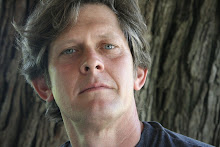
This week's newspaper column. Read it in the Hatteisburg American.
When it comes to understanding sustainability, Nature is our greatest teacher. And one of Nature’s fundamental lessons is that the cold dark gloom of winter is always followed by the bursting exuberance of spring.
Many times we look at the winter in the world around us and see only desolation. How often do we see a rundown neighborhood and count it out, or experience an economic downturn and pronounce it permanent?
Just as in Nature, the world we create is in a state of constant change. Here’s the difference: Nature always honors the natural cycles and creates systems that self-perpetuate; sometimes we humans do not.
But Nature has vision along with a fail-safe solution for dealing with death and blight. It’s called “spring.”
Spring is fresh. It is a time for new beginnings and new growth. With help from the birds and the winds, Nature relentlessly spreads the seeds of the next generation. A good number of those seeds find fertile ground and, under the nourishing warmth of the sun, grow heartily.
Spring is bold. It does not flinch at the deadness of winter. Spring is not deterred by the brown surface patina visible to the naked eye. In fact, the robustness of spring benefits from the nutrients of last season’s fallen remains. What Nature knows is that great potential lies underneath, and the fulfillment of that hidden potential lies just a season away. What we call “dead” could in fact be the genesis of a new beginning.
Spring fosters a collective forward momentum. In Nature, growth fosters growth. The sprouts of new life collectively create a synergy that attracts the pollinating forces necessary for the expansion of an even more robust life.
Spring is optimistic. Even after the harshest winter, spring arrives with great enthusiasm and confident of ultimate success. Spring acknowledges obstacles, but is not discouraged. Witness the shoots of green winding up through cracks in the sidewalk, or fast-growing vines taking over a brick wall, or trees growing through fences. In spring, growth inevitably softens the hard edges of winter.
Spring is diverse. Variety is everywhere. Nature understands that diversity is necessary for natural sustainability. Look at unattended patches of earth. Never does one see a single species growing in one place. Natural, healthy growth comes in as a chorus of sizes, shapes, and colors influenced by the local climate and soils. (Ironically, large pristine grass lawns are among the least diverse patches of spring; that’s why they take so much maintenance.)
So if you look around and see patches of winter in the world, now is not the time to write an obituary. On the contrary, it is the time to ferociously plant seeds. And with Nature as our guide, the beginning of the harvest can’t be far away.




No comments:
Post a Comment